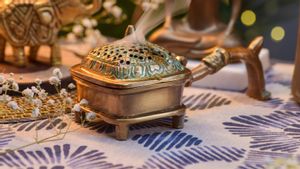Moving to a new house is invigorating and marks a new beginning for the whole family. Right from choosing aesthetic furniture and modern yet contemporary interior design to reserving a special place for your pooja room—you plan it all well in advance, isn’t it? Because that’s how excited you are about designing your new house.
While you plan everything collectively with your family members or with your interior designer, it is important to design and place everything according to Vastu. Though most of us know about it, for the ones who don’t, Vastu Shastra is an ancient guide of designing and building your house into a home with positive and blissful vibes and energy.
Especially, while setting up your pooja room, you don’t want to go wrong and are likely to have questions like: in which direction should you set up your pooja room, where should you face while offering prayers, where should the deities be placed, and so on. This is because, at the end of the day, all we want is positivity and peace to reign in our home.
Moreover, according to Vastu Shastra, your pooja room plays a crucial role in dispersing positivity across your home. This is why it makes sense to carefully plan your pooja room while keeping in mind the ideologies of Vastu Shastra.
To help you design your pooja room according to Vastu, we’ve put together a few excellent Vastu tips that you can consider:
1. Where should you place your pooja room
Always remember, the best location for the mandir in the house is in the northeast direction. And if due to any constraints that doesn’t work, the north and the east angles in the house will work too. To a certain extent, the west is allowed too if you are left with no other option. However, you should never place the pooja room in the south direction as it is ruled by Yama, the God of Death. Also, never place the pooja room below a staircase or against a bathroom’s wall, as it is considered unfavourable.
For best results, it is advisable to build the pooja room on the ground floor of your home since upper floors are less recommended according to Vastu. However, if you don’t have this option, you can build it on whichever floor you’re staying at while taking care of the direction.
2. Where should you face while offering prayers
You need to make sure that your face is either in the north or the east while you are offering prayers. So, you should place idols accordingly.
3. Where should the deities, floor lamps, and agni kund in your pooja room face
Deities in the pooja room must never face each other or the door, and ideally, they must also be placed in the northeast direction and never next to a wall. The direction of floor lamps and agni kund should be in the southeast direction. Also, make sure that the deities in the pooja room are not hewed or broken.
4. Why should you declutter your pooja room and keep it clean
Your pooja room must never be cluttered. You should never use this place for any other purpose and avoid using it as a storage space. If there are no other options, the direction of the cupboard must be to the west or the south. If you are facing a space crunch, you can dwell the mandir in the living room or the kitchen — but it should be in the northeast direction of your home only.
5. What are the things one needs to take care of while designing a pooja room’s interior?
While buying the pooja room door, if possible, ensure that the door has two shutters ideally, and is made of wood preferably. Also, never put any pictures of the departed or any paintings which depict ferocity of any type in the pooja room.
Preferred colours for painting pooja rooms are white, yellow, light blue, or any delicate and calming shades that are also considered favourable for good Vastu of pooja rooms. Making use of copper containers is also considered positive for the pooja room.
6. Why should you avoid placing your mandir in the bedroom?
Having a mandir in the bedroom is usually a no. Otherwise, you might have to keep a lot of things in mind, such as - your feet should never point in the direction of the mandir when you’re sleeping, you should cover the mandir when not in use and other things.
Few key points to remember:
- According to Vastu Shastra, to welcome the morning every day, each window of the living room should be either facing north or East facing.
- Vastu also focuses on placing the living room in the North-East corner (Eshanya kone). It carries supremacy, well-being, and opulence.
- North-west (Vayu or Vayavya corner) direction is an alternative of the best option for the kitchen.
- As per Vastu, there is no specified Pooja room size, but what can be taken care of is not to use the staircase as a Pooja room. Or the pooja room must also not have a wall in proximity to the bathroom. It is ominous and inauspicious for the family.
Significance of Following Vastu Tips While Designing Your Pooja Room
The in-house pooja room is a polestar of positive energy, and hence, Vastu for pooja rooms is vastly endorsed. It is believed that having a pooja room or a mandir designed according to the Vastu, is a sure-shot way of keeping adverse vibrations at bay and spreading positive vibes and unconditional love across the home. Especially, in India, designing a pooja room according to Vastu is of sheer importance.
You can work with a professional interior designer who is well-versed and certified in Vastu Shastra, such that you can design your pooja room in line with Vastu philosophies.




